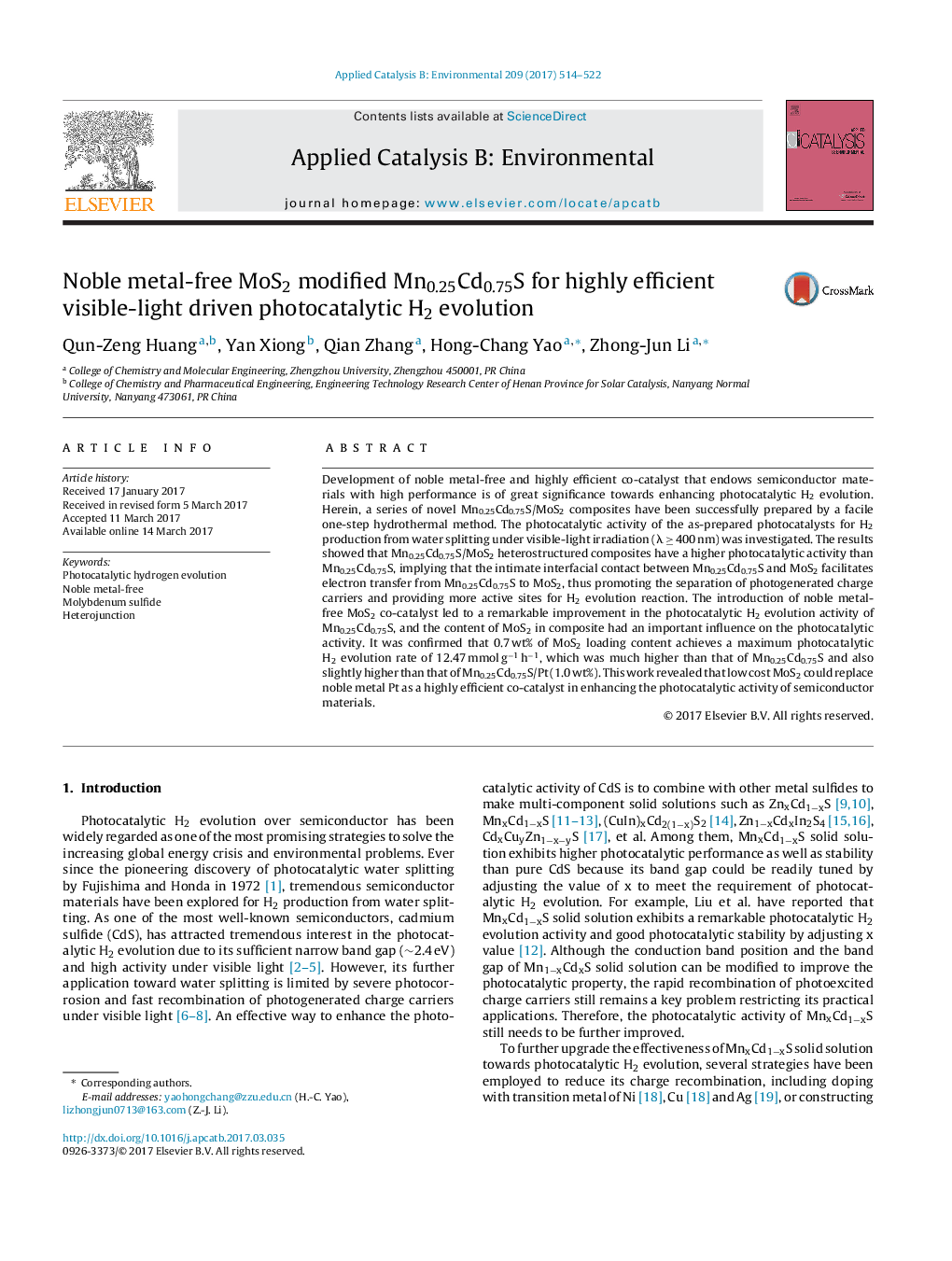| Article ID | Journal | Published Year | Pages | File Type |
|---|---|---|---|---|
| 6454221 | Applied Catalysis B: Environmental | 2017 | 9 Pages |
â¢The composites were prepared by a facile one-step hydrothermal method.â¢Sufficient contact interface between Mn0.25Cd0.75S and MoS2 is achieved.â¢The heterojunction effectively promotes the transfer and separation of eâ and h+.â¢The composite exhibits enhanced photocatalytic activity for H2 evolution.
Development of noble metal-free and highly efficient co-catalyst that endows semiconductor materials with high performance is of great significance towards enhancing photocatalytic H2 evolution. Herein, a series of novel Mn0.25Cd0.75S/MoS2 composites have been successfully prepared by a facile one-step hydrothermal method. The photocatalytic activity of the as-prepared photocatalysts for H2 production from water splitting under visible-light irradiation (λ â¥Â 400 nm) was investigated. The results showed that Mn0.25Cd0.75S/MoS2 heterostructured composites have a higher photocatalytic activity than Mn0.25Cd0.75S, implying that the intimate interfacial contact between Mn0.25Cd0.75S and MoS2 facilitates electron transfer from Mn0.25Cd0.75S to MoS2, thus promoting the separation of photogenerated charge carriers and providing more active sites for H2 evolution reaction. The introduction of noble metal-free MoS2 co-catalyst led to a remarkable improvement in the photocatalytic H2 evolution activity of Mn0.25Cd0.75S, and the content of MoS2 in composite had an important influence on the photocatalytic activity. It was confirmed that 0.7 wt% of MoS2 loading content achieves a maximum photocatalytic H2 evolution rate of 12.47 mmol gâ1 hâ1, which was much higher than that of Mn0.25Cd0.75S and also slightly higher than that of Mn0.25Cd0.75S/Pt (1.0 wt%). This work revealed that low cost MoS2 could replace noble metal Pt as a highly efficient co-catalyst in enhancing the photocatalytic activity of semiconductor materials.
Graphical abstractNovel Mn0.25Cd0.75S/MoS2 composite prepared by a facile one-step hydrothermal method possessed sufficient contact interface and more active sites, which displayed an enhanced photocatalytic H2 evolution activity under visible light irradiation.Download high-res image (123KB)Download full-size image
